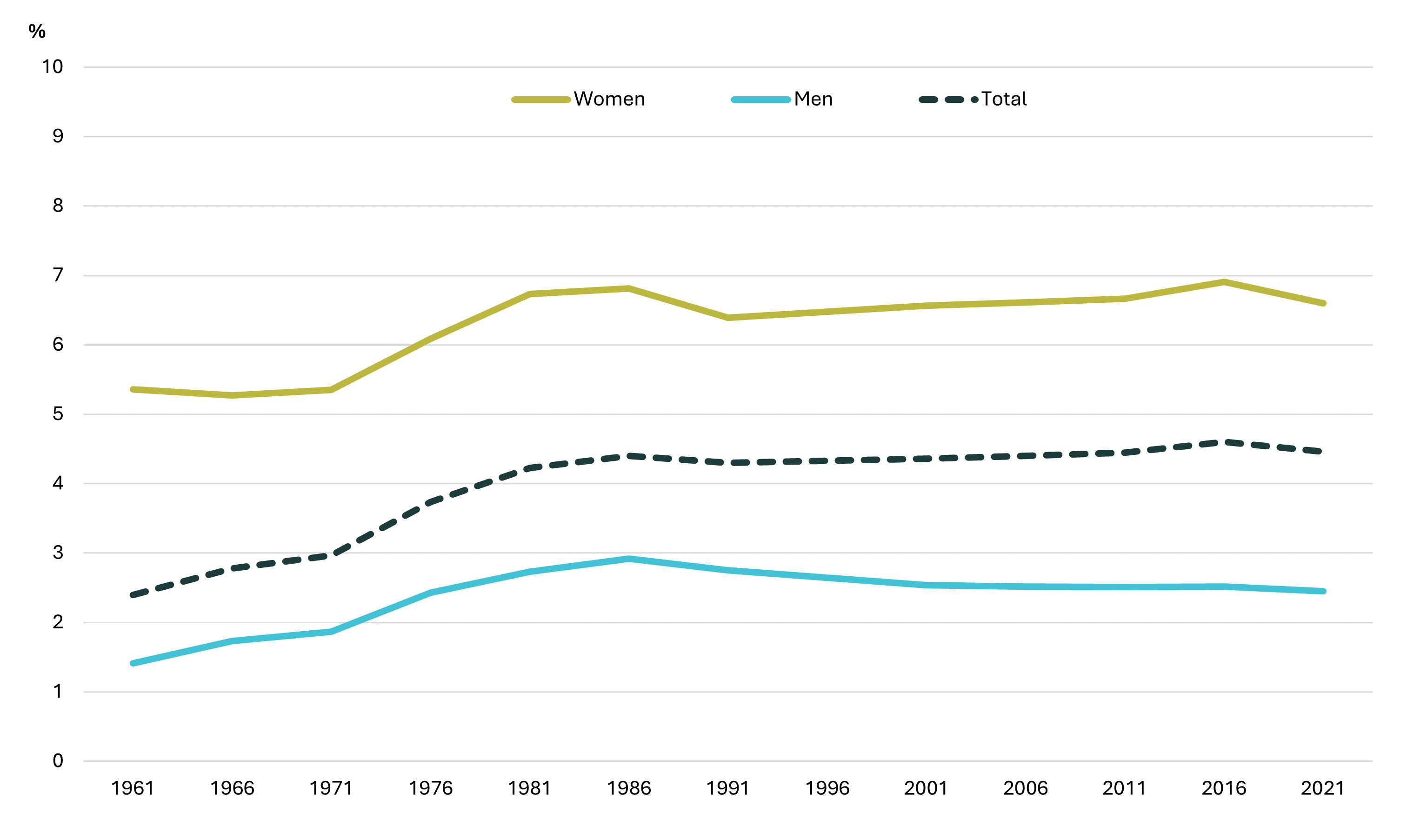Teachers in Australia
Since 1994, 5 October has been celebrated internationally as
World Teachers’ Day. On this
date in 1966 the ILO/UNESCO
Recommendation concerning the Status of Teachers was adopted, which outlines teachers’ rights and responsibilities,
training standards and other work conditions (p. 3). This article identifies
key workforce and gender trends relating to Australia’s teachers and highlights
educators who went on to have parliamentary careers.
Teacher characteristics
According to the most
recent Australian Bureau of Statistics (ABS) data (August 2024),
there are approximately 697,000 people working as education professionals (in
their main job). These people work in all levels of education, from pre-primary
to tertiary, as well as in specialist settings, such as music teachers or
teachers of the hearing impaired. About three-quarters of educators are school
teachers, including:
- 11%
pre-primary
- 24%
primary
- 21%
secondary
- 5% special
education.
Around 16% of
education professionals are in tertiary roles and 10% work in miscellaneous
education roles.
Workforce and gender comparisons
In the 60 years from 1961 to 2021, the ABS 5-yearly Census of Population
and Housing (Census) has provided a snapshot of the education sector. Teaching
has been reported within the top 10 largest occupations since 1971. As a
proportion of Australia’s total employed population, education professionals
represented almost 5% in 2021, and this has been largely stable since the 1980s
(see Figure 1).
Figure
1. Teachers as a proportion of total employed, 1961 to 2021

Source: Australian
Bureau of Statistics (ABS), Census of Population and Housing; (ABS:
Canberra, various from 1961 to 2021).
The Census further reveals that teaching has become more
feminised over time. For example, from 1961 to 2021, women went from 20% to 50%
of university lecturers or tutors. The exception to this trend is in the early
childhood sector, employing 98% women in 2021.
The most recent Labour
Force survey results (August 2024) indicate approximately three quarters of
all education professionals are women (72%).
Figure
2. Proportion of educators who are women by teaching levels, 1961 to
2021

Source: ABS, Census
of Population and Housing; (ABS: Canberra, various from 1961 to 2021).
Spotlight on early childhood teachers
Australia’s number of early childhood (or pre-primary) teachers
increased from just over 1,900 in 1961 to just over 30,000 by 2021.
More than a third of these teachers were aged less than 35
years and almost 2% identified as Aboriginal and/or Torres Strait Islander. Pre-primary
teachers had higher
rates of part-time work (46%) compared to primary (35%) and secondary (24%)
teachers.
Pre-primary teachers had lower
median weekly earnings compared to others in the profession, but broader
workforce comparisons are more mixed. For example, in August
2023 they had higher part-time ($793 compared to $655) but lower full-time
($1,269 compared to $1,600) median weekly earnings. Other than hours of work, these
differences could be due to a number of reasons including a younger age
profile, less scope for advancement or shorter time spans in the profession (and
therefore fewer pay point increases), (see Cortis
et al, 2023, 13).
Educational professionals in Parliament
According to the Parliamentary Handbook, of the 1,838
federal parliamentarians to have served since Federation, 217 had previously
worked as education professionals (12%). Within this, 27 current
parliamentarians are former educators, spanning the tertiary (15), school (9)
and pre-school (1) categories. Notably, Senators Bridget McKenzie and Deb O’Neill were both high
school and university educators.
There has only been one example of a former teacher
becoming Australia’s Prime Minister. This was Francis Forde who briefly served
following John Curtin’s death and Ben Chifley’s election as leader
of the governing Labor Party. Another notable former teacher is Dame Dorothy Tangney, who alongside Dame Enid Lyons in 1943 became the
first women to serve in the Australian Parliament. In her first speech within
Parliament, Tangney reflected on her previous vocation, asserting that ‘if any
democracy is to succeed it must be an educated democracy’ and that ‘if we are
to achieve anything as a nation, we must tackle education over its whole
range’.
Note: The ABS has not published
sufficiently detailed data for the 1996 Census (only broad occupations, for
example Professionals). Caution should be used when interpreting Figures 1 and
2 as the data points have been joined as if the time series are continuous.